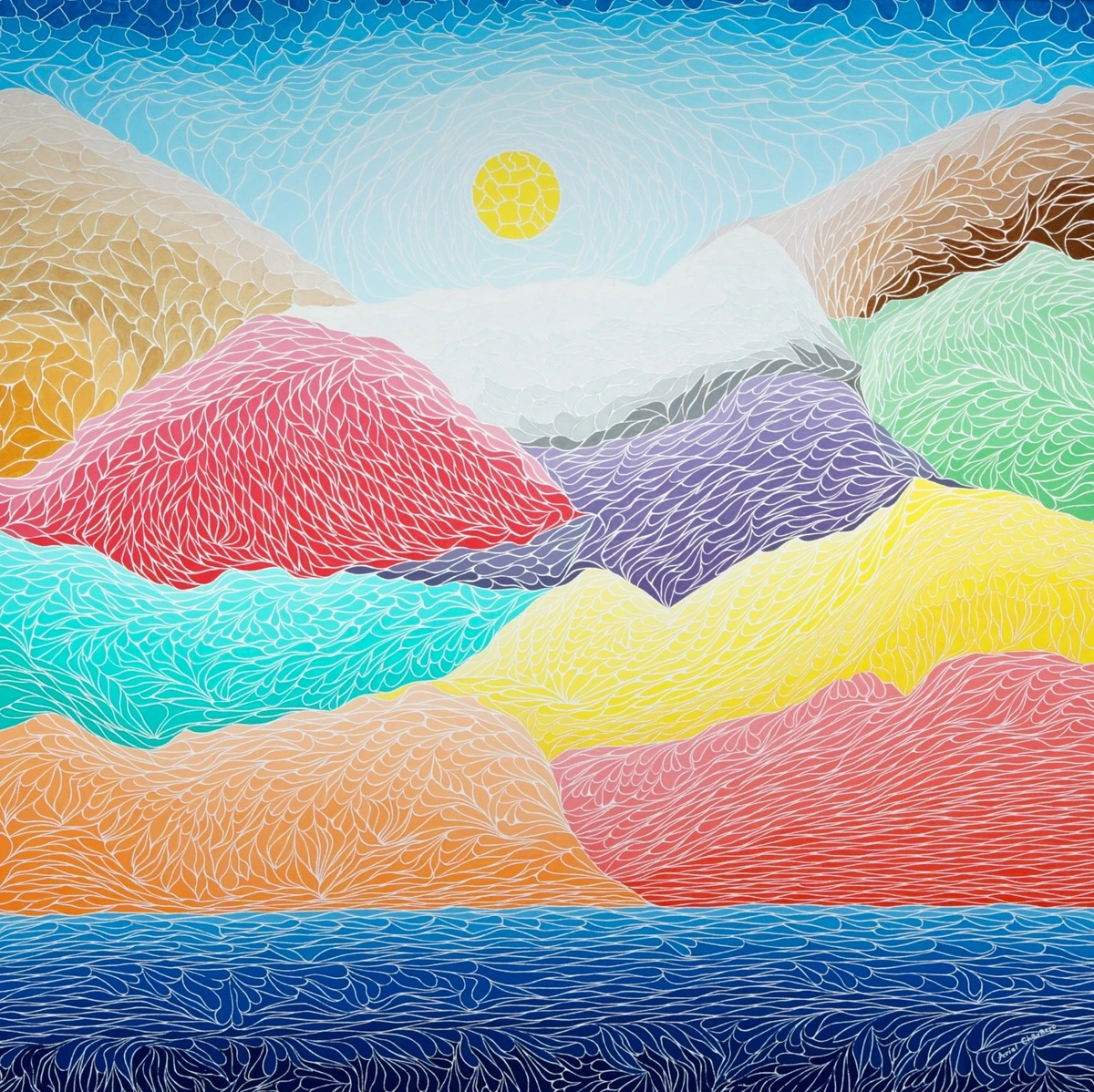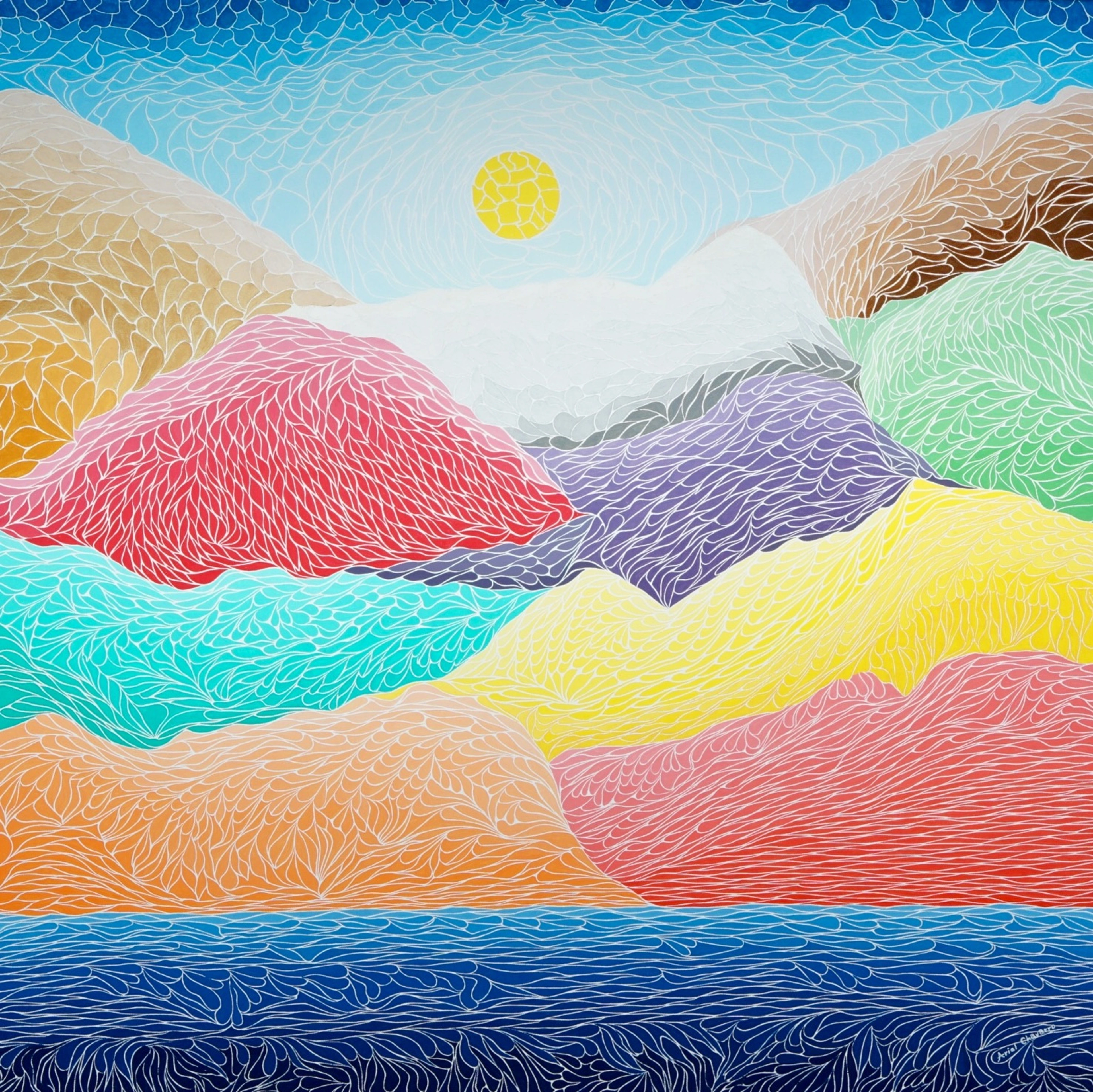
Famous Modern Art: Your Engaging Guide to Iconic Works & Why They Matter
Feeling lost in modern art? This engaging guide explores famous works, key movements (Dadaism, Cubism, Abstract Expressionism), why they're iconic, and how to look at them – with personal insights and a touch of humor.
Diving into Famous Modern Art: More Than Just Squiggles and Squares?
Let's be honest, wandering through a modern art museum can sometimes feel... bewildering. You see a canvas that's just blocks of color (Color Field painting, anyone?) or a sculpture that looks like it escaped from a scrapyard, and the little plaque tells you it's a masterpiece. Famous, even. I remember standing in front of a Rothko for the first time, feeling absolutely nothing, while everyone else seemed to be having some profound experience. I just nodded thoughtfully, perhaps stroked my chin, but inside, a tiny voice was definitely whispering, "Really? This is famous?" It felt like I'd missed the memo, or maybe the entire point.
I get it. Sometimes modern art feels like an inside joke you're not privy to. But what if it's less about a secret handshake and more about understanding the context, the rebellion, and the sheer guts it took to create something completely new? Rather than just listing famous paintings, we'll explore why they became famous, what they were trying to say, and how they still echo in the art world today – maybe even in the colorful abstract pieces you can find right here.
So, grab a metaphorical coffee, settle in, and let's unravel the vibrant, sometimes confusing, but always fascinating world of famous Modern Art. We'll try to make sense of it together, without the stuffy academic jargon (mostly).
What Exactly Is Modern Art, Anyway?
Before we dive into the "famous" part, let's quickly pin down what we mean by Modern Art. It's a bit slippery, but generally, it refers to the Western art produced roughly between the 1860s/1870s and the 1960s/1970s. Think of it as a period of massive change – in society, technology, and, consequently, in art.
Artists started breaking away from traditional rules. Before this, the goal was often realistic representation – making a painting look as much like the real world (or an idealized version of it) as possible. Modern artists, however, started asking different questions:
- What if color could express emotion, not just reality? (See how artists use color)
- What if we showed multiple viewpoints at once?
- What if we focused on the feeling of a moment, not just its appearance?
- What if art didn't have to represent anything recognizable?
This era was about experimentation, innovation, and reflecting a rapidly changing world. It paved the way for everything from Impressionism's blurry landscapes to Pollock's paint splatters. You can get a broader overview in our guide to Modern Art history and styles.
Why Does Some Modern Art Become "Famous"?
Ah, the million-dollar question (sometimes literally, when you look at art prices). Fame in the art world isn't just about being "good" – it's a complex mix of factors. Honestly, sometimes I look at the prices certain pieces fetch and just scratch my head, wondering which of these factors was really at play. Here are some of the big ones:
- Influence: Did the artwork inspire other artists or change the course of art history? Jackson Pollock's drip paintings, for instance, completely shifted ideas about painting.
- Historical Context: Does the art capture a specific moment, feeling, or societal shift? Picasso's Guernica is a powerful example, responding directly to the bombing of a Spanish town.
- Controversy & Shock Value: Sometimes, art becomes famous precisely because it shocked audiences or critics. Duchamp's infamous urinal, Fountain, is a prime example of challenging the very definition of art.
- Museum Acquisition & Promotion: Getting into major museum collections (like MoMA, Tate Modern, or the Pompidou) significantly boosts an artwork's profile and historical validation. MoMA's early acquisitions were crucial for many modern artists.
- Market Forces: The secondary art market, auctions, and collector demand play a huge role in visibility and perceived value. Record-breaking auction sales for artists like Rothko or Pollock certainly amplify their fame.
- The Story: Sometimes, the artist's life story or the story behind the artwork captures the public imagination (think Van Gogh's ear, which, while perhaps overshadowing his actual art for some, undeniably adds to his legend).
It's rarely just one thing. Often, it's a potent combination of these elements that elevates an artwork from interesting to iconic. Personally, I find the 'Story' and 'Controversy' factors the most fascinating – it's amazing how much non-art stuff can contribute to a piece's fame.
A Whirlwind Tour Through Famous Modern Art Movements & Icons
Okay, let's hit some highlights. This isn't exhaustive (we'd be here all week!), but it covers some of the big hitters whose works you've likely seen. Get ready for some bold ideas and even bolder colors.
Impressionism (c. 1870s-1880s)
- The Gist: Capturing the fleeting impression of a moment, especially the effects of light and color. Think outdoors, loose brushwork, everyday scenes. It was radical because it wasn't "finished" or realistic in the traditional sense. Standing in front of a Monet, you almost feel the breeze and see the light shimmering.
- Key Names: Claude Monet, Edgar Degas, Pierre-Auguste Renoir, Camille Pissarro.
- Iconic Example: Monet's Impression, Sunrise (which gave the movement its name) or his Water Lilies series. Also, Degas's paintings of dancers or Renoir's Bal du moulin de la Galette.
![]()
- Dive Deeper: Your Ultimate Guide to Impressionism.
Post-Impressionism (c. 1886-1905)
- The Gist: Not one single style, but artists building on or reacting against Impressionism. They wanted more structure, more emotion, more symbolism. It's like they took the Impressionist palette and decided to really think about what they were doing with it.
- Key Names: Vincent van Gogh, Paul Cézanne, Paul Gauguin, Georges Seurat.
- Iconic Examples: Van Gogh's The Starry Night, Seurat's A Sunday Afternoon on the Island of La Grande Jatte (Pointillism), Cézanne's studies of Mont Sainte-Victoire.
![]()
![]()
Fauvism (c. 1905-1908)
- The Gist: Wild beasts! (That's what "Fauves" means). Intense, non-naturalistic color used for emotional impact. Bold brushwork, simplified forms. It was shocking! Imagine walking into a gallery and seeing trees painted bright red and skies in electric blue – it was a jolt to the system.
- Key Names: Henri Matisse, André Derain.
- Iconic Example: Matisse's Woman with a Hat or Derain's The Pool of London.
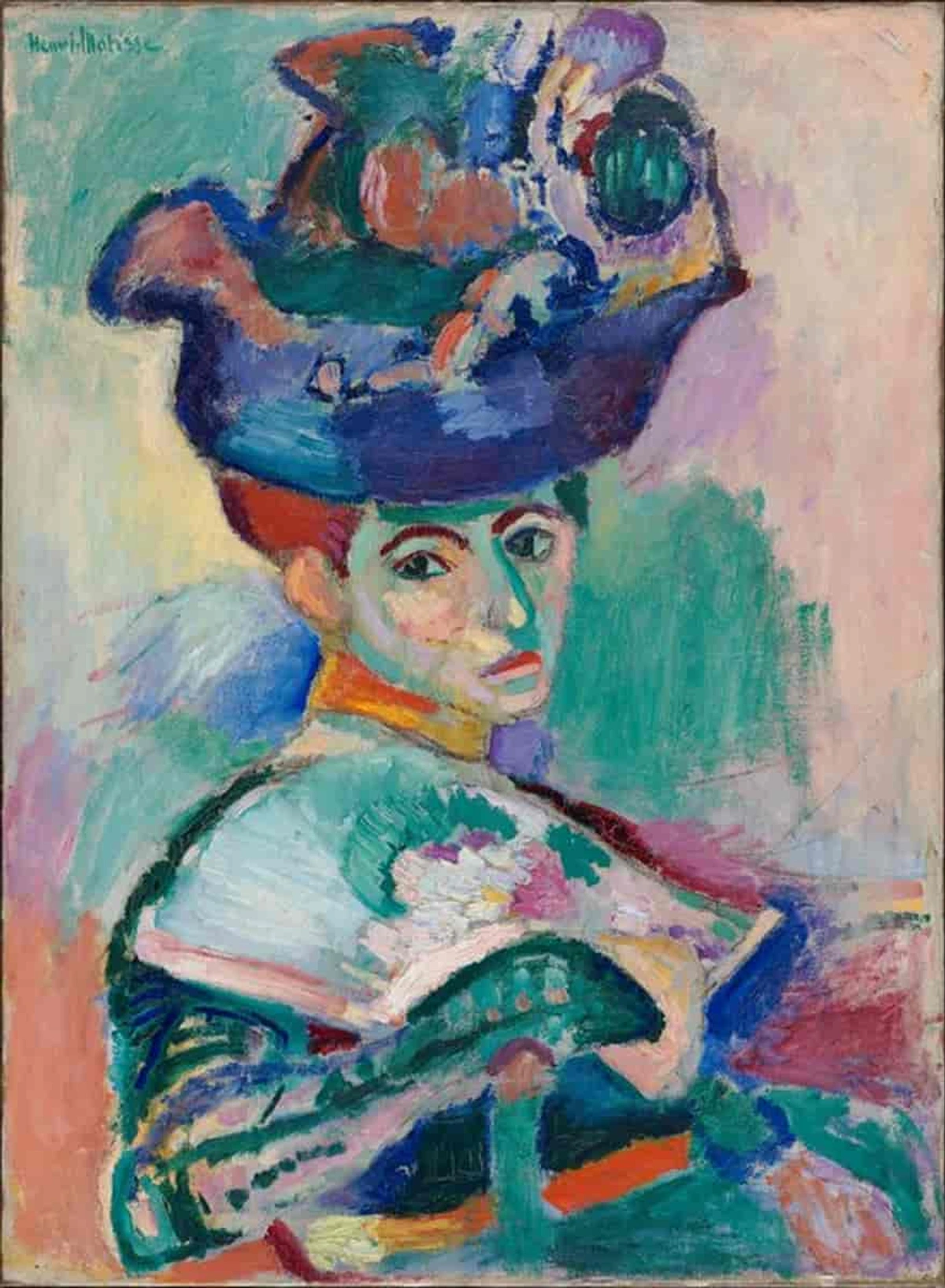
- Dive Deeper: Ultimate Guide to Fauvism.
Expressionism (c. 1905-1920s)
- The Gist: Focusing on subjective experience and emotional turmoil over objective reality. Often features distorted figures, jarring colors, and a sense of anxiety or intensity. Originated primarily in Germany. This is art that screams (sometimes literally) how the artist feels.
- Key Names: Edvard Munch, Ernst Ludwig Kirchner, Wassily Kandinsky (early work).
- Iconic Example: Munch's The Scream is the quintessential image of Expressionist anxiety.
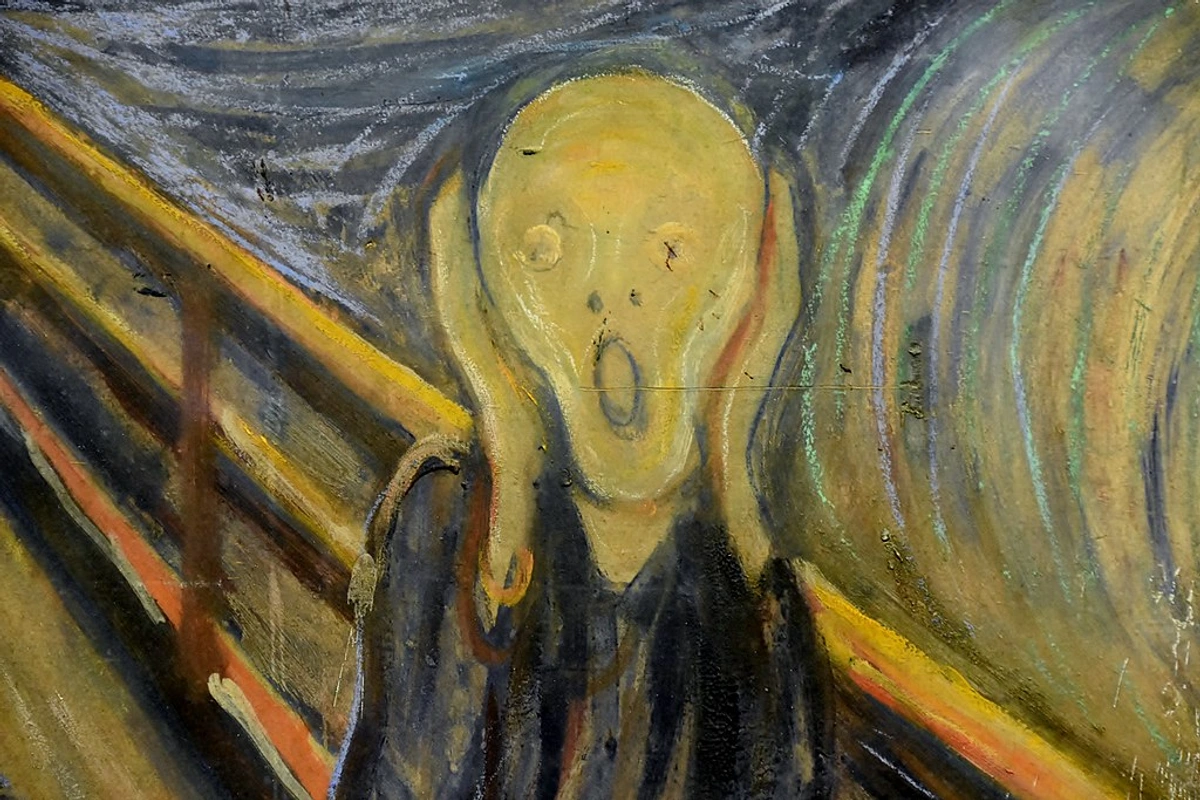
Cubism (c. 1907-1914)
- The Gist: Revolutionizing perspective. Objects are broken up, analyzed, and reassembled in an abstracted form, showing multiple viewpoints simultaneously. Geometric shapes dominate. Trying to explain Cubism to a child feels a bit like explaining how you can see the front and back of a box at the same time – it just breaks the rules of how we normally see things.
- Key Names: Pablo Picasso, Georges Braque, Juan Gris.
- Iconic Example: Picasso's Les Demoiselles d'Avignon or Guernica. Juan Gris's still lifes, like Violin and Grapes, are also great examples.
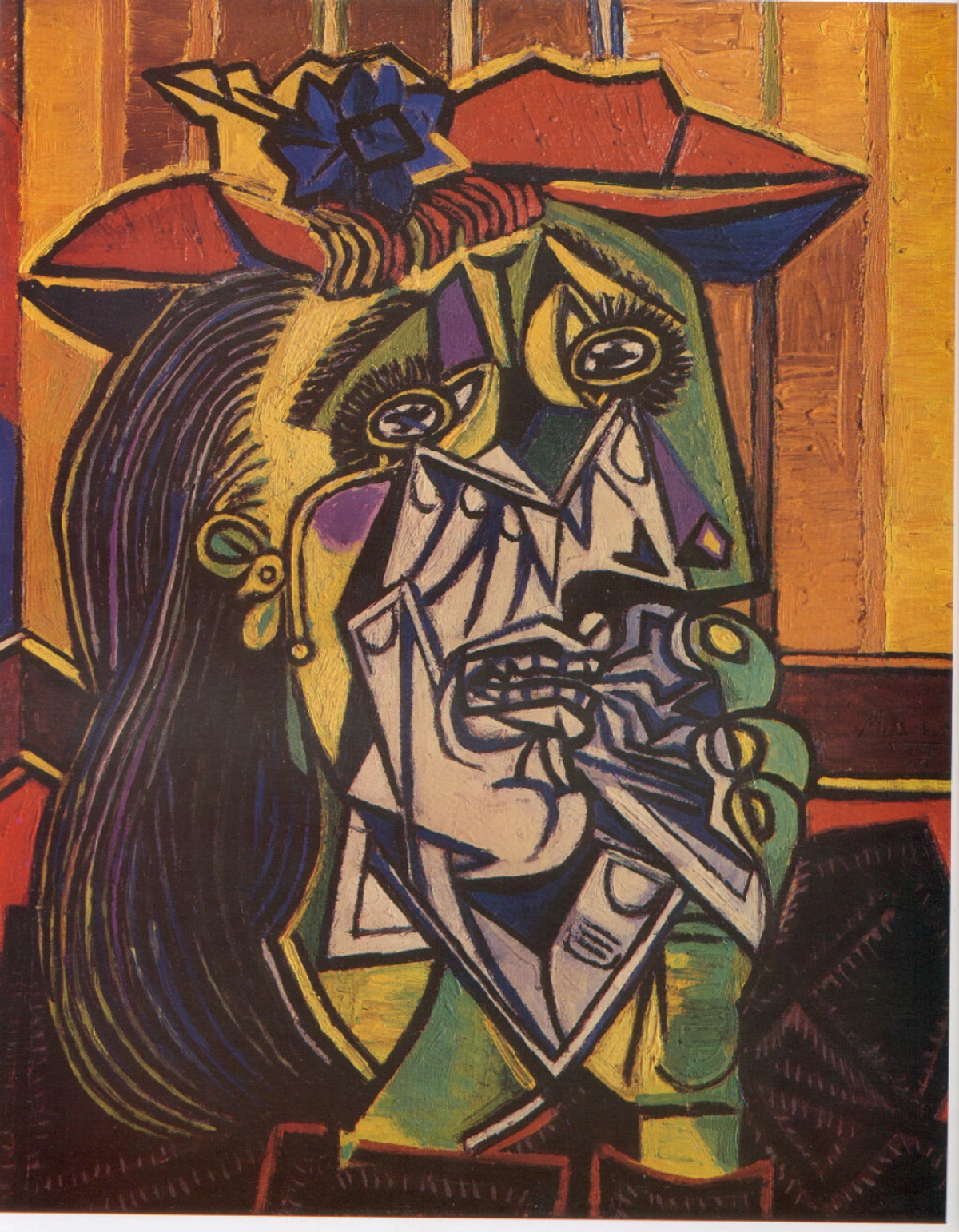
- Dive Deeper: Cubism Art Explained: Your Ultimate Guide.
Dadaism (c. 1916-1924)
- The Gist: Born out of the disillusionment of World War I, Dada was anti-art, anti-bourgeois, and anti-logic. It embraced nonsense, irrationality, and protest. It was a deliberate slap in the face to traditional values and aesthetics. If modern art was a rebellion, Dada was throwing rotten tomatoes at the establishment.
- Key Names: Marcel Duchamp, Hannah Höch, Tristan Tzara.
- Iconic Example: Marcel Duchamp's Fountain (a signed urinal) is the most famous example of Dada's provocative anti-art stance. Hannah Höch's collages, like Cut with the Kitchen Knife Dada Through the Last Weimar Beer-Belly Cultural Epoch of Germany, showcase the movement's use of found imagery and social critique.
![]()
Abstract Art (Developing from c. 1910s)
- The Gist: Moving away from representational reality altogether. Focus on shapes, forms, colors, and textures as the subject itself. This wasn't one movement but a major trend with various branches. It's art that asks you to look and feel, not just recognize.
- Key Names: Wassily Kandinsky, Piet Mondrian, Kazimir Malevich.
- Iconic Examples: Kandinsky's purely abstract compositions like Composition VIII, Mondrian's grid paintings (De Stijl) like Composition No. IV.
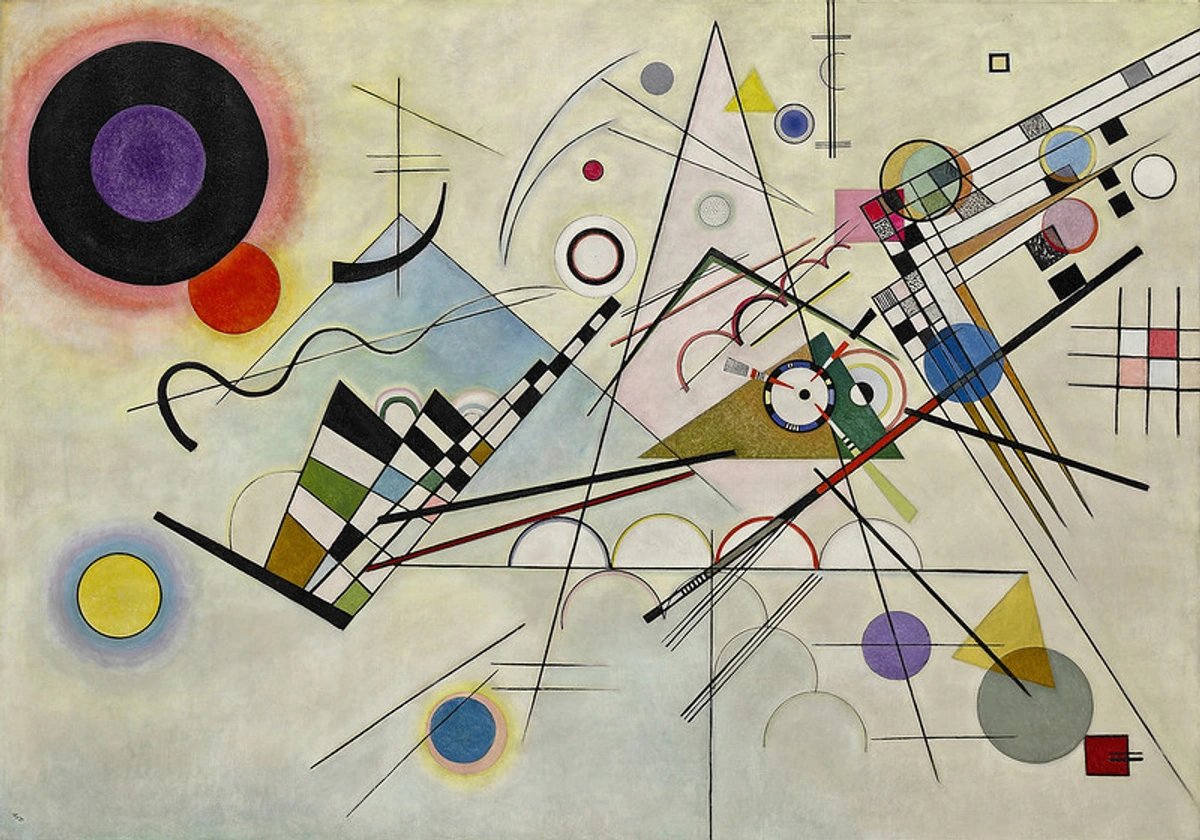

- Dive Deeper: History of Abstract Art, Why is Abstract Art Compelling?
Surrealism (c. 1920s-1940s)
- The Gist: Tapping into the unconscious mind, dreams, and irrationality. Often features bizarre scenes, unexpected juxtapositions, and a meticulous, realistic technique applied to dreamlike subjects. It's like your weirdest dream decided to become a painting.
- Key Names: Salvador Dalí, René Magritte, Max Ernst, Joan Miró, Yves Tanguy.
- Iconic Example: Dalí's The Persistence of Memory (the melting clocks!) or Magritte's The Treachery of Images ("Ceci n'est pas une pipe").
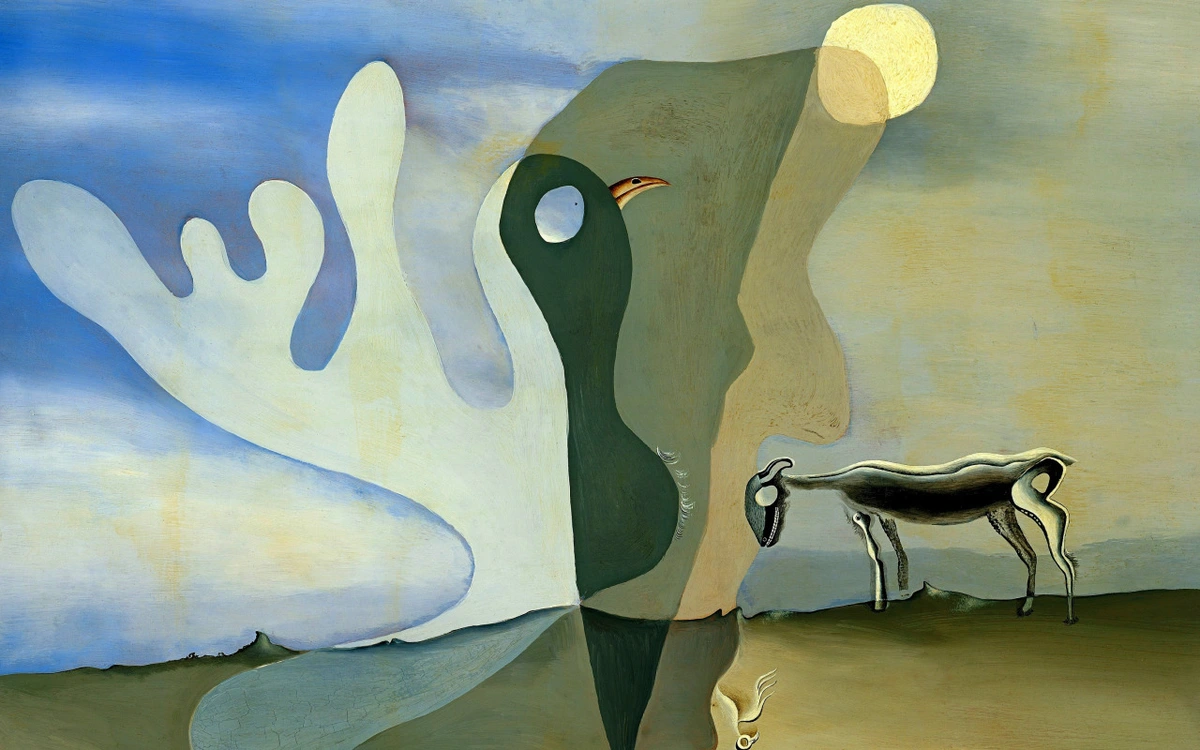
Abstract Expressionism (c. 1940s-1950s)
- The Gist: The first specifically American movement to achieve international influence. Often large-scale, focused on spontaneous, subconscious creation. Two main branches: Action Painting (energetic gestures, like Jackson Pollock's Convergence) and Color Field Painting (large areas of flat color, like Mark Rothko's imposing rectangles). This is where scale really starts to matter – the paintings can feel like environments.
- Key Names: Jackson Pollock, Mark Rothko, Willem de Kooning, Franz Kline.
- Iconic Example: Pollock's drip paintings, like Number 17A, or Rothko's color blocks, such as No. 14, 1960.
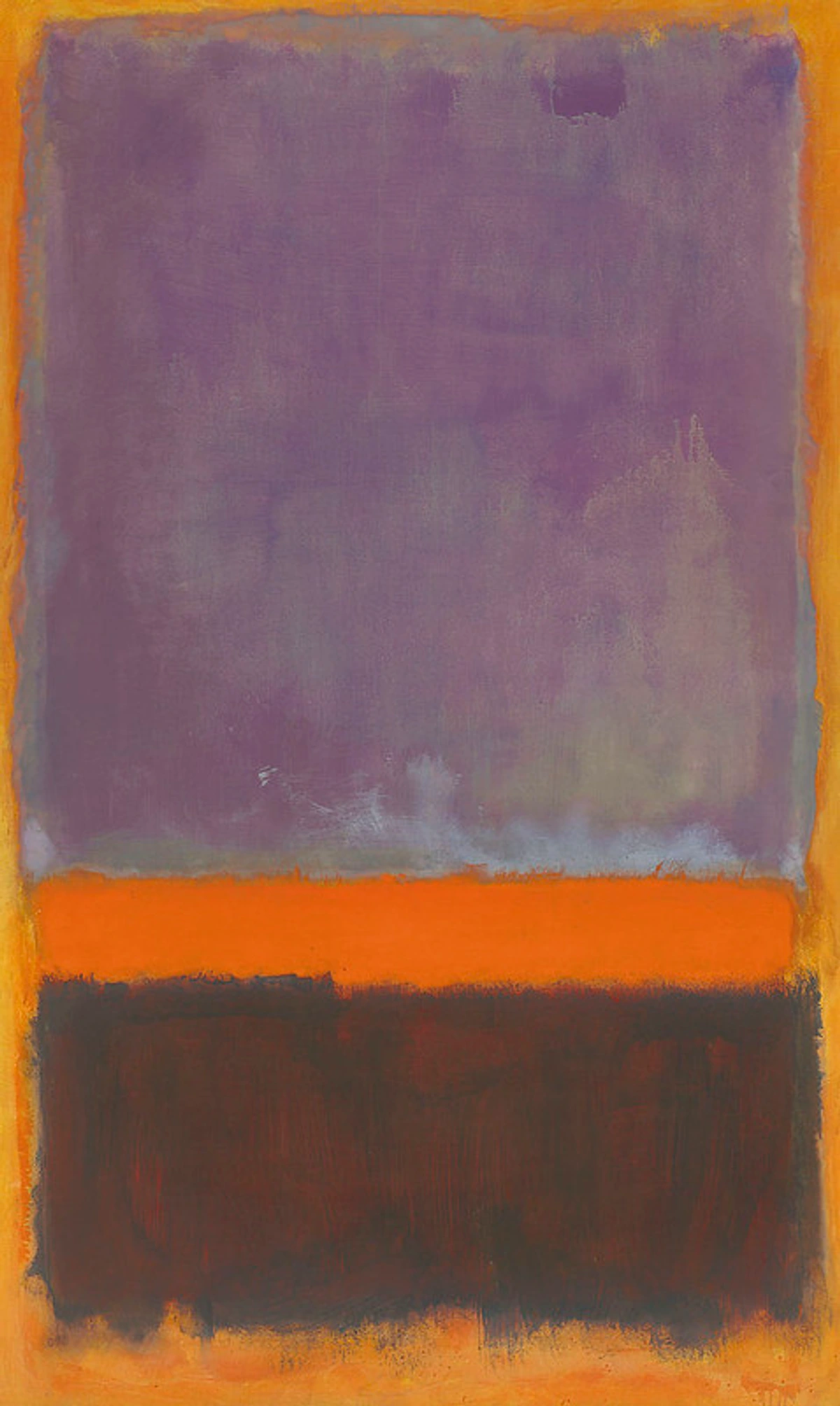
Pop Art (c. 1950s-1960s)
- The Gist: Borrowing imagery from popular and mass culture (advertising, comic books, everyday objects). Often seen as a reaction against the seriousness of Abstract Expressionism. It's bright, bold, and sometimes ironic. (Often considered the bridge between Modern and Contemporary Art). Suddenly, a soup can could be art.
- Key Names: Andy Warhol, Roy Lichtenstein, Claes Oldenburg.
- Iconic Example: Warhol's Campbell's Soup Cans or his Marilyn Monroe portraits. Lichtenstein's comic-strip-style paintings like Whaam!.
![]()
Beyond the Canvas: Sculpture, Photography, and More
Modern art wasn't just about painting! Sculpture also underwent a revolution. Auguste Rodin, often considered a bridge to modern sculpture, brought new emotional intensity with works like The Thinker. Constantin Brâncuși stripped forms down to their essence (think Bird in Space). Later, artists like Alexander Calder introduced kinetic sculpture (mobiles!).
The definition of art itself expanded dramatically. Photography, once seen as merely a technical process, became a powerful artistic medium in the hands of modern artists like Alfred Stieglitz or Man Ray. Collage and assemblage, using found objects and materials, were pioneered by Cubists and Dadaists and became central to movements like Surrealism and Pop Art. Think of Hannah Höch's Dada collages or Robert Rauschenberg's "Combines" that blurred the lines between painting and sculpture.
These explorations beyond traditional painting were crucial to the modernist project, constantly pushing the boundaries of what art could be.
How to Look At (and Maybe Even Enjoy) Famous Modern Art
Okay, so you're standing in front of a famous modern artwork. Maybe it's a giant canvas of blue, or a pile of bricks (yes, that's a thing). Now what? Here are a few thoughts, drawing from my own experiences trying to figure out how to 'read' a painting and not feel completely lost:
- Forget "What is it supposed to be?" (Sometimes): Especially with abstract art, the point isn't always representation. Don't get stuck trying to find a hidden object. Ask instead: How does it make me feel? What does the color/texture/shape suggest? What catches my eye? Does the sheer scale of it impact you?

- Read the Plaque (Seriously): Context is king! Knowing the title, artist, date, and maybe a short blurb can unlock a lot. Was the artist reacting to an event? Experimenting with a new idea? Knowing Van Gogh's struggles adds layers to his swirling skies. Knowing Duchamp called his urinal Fountain and submitted it to an exhibition changes everything.
- Look at the Technique: How is the paint applied? Thick and textured (impasto)? Thin and flat? Precise dots? Wild splashes? The how is often as important as the what. Notice the elements of art like line, color, shape, and yes, even scale.
- Consider the Time: What was happening in the world when this was made? How might that have influenced the artist? Dadaism makes a lot more sense when you know it emerged from the chaos of WWI.
- Consider the Scale: Is it tiny and intimate, or does it fill an entire wall? How does its size affect your experience of it? Standing in front of a massive Abstract Expressionist canvas is a very different experience than leaning in close to a small Impressionist sketch.
- Don't Force It: It's okay not to like everything. Sometimes an artwork just doesn't resonate, and that's fine. Maybe you prefer the vibrant energy of Fauvism over the quiet contemplation of a Rothko. Discovering your personal art taste is part of the journey.
- Talk About It: Discussing art with others can open up new perspectives. What do they see? What does it remind them of?
Understanding why people like modern art often comes down to appreciating the break from tradition, the exploration of new ideas, and the reflection of a complex, changing world.
Where Can You See These Icons?
Experiencing famous modern art in person is unbeatable. Some of the best museums and galleries in the world specialize in this period:
- Museum of Modern Art (MoMA), New York: A cornerstone collection. (See NYC guide)
- Tate Modern, London: Huge collection, impressive space. (See London guide)
- Centre Pompidou, Paris: Iconic building, fantastic collection. (See Paris guide)
- Solomon R. Guggenheim Museum, New York: Frank Lloyd Wright's architectural masterpiece housing modern art.
- Art Institute of Chicago: Strong Impressionist and Post-Impressionist holdings.
- Musée d'Orsay, Paris: Housed in a former train station, focusing on 1848-1914 (especially Impressionism/Post-Impressionism).
- Stedelijk Museum, Amsterdam: Major collection of modern and contemporary art and design.
- Kröller-Müller Museum, Otterlo (Netherlands): Huge Van Gogh collection, set in a national park.
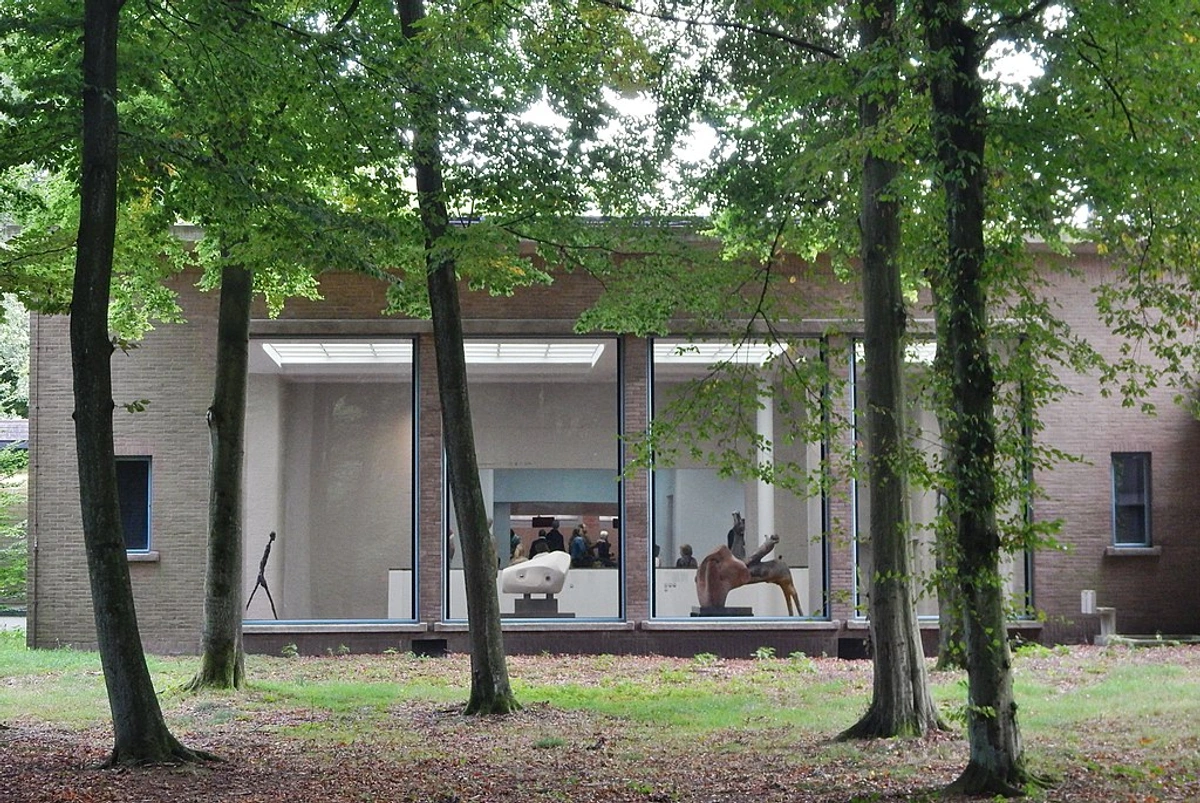
And don't forget smaller galleries and regional museums! Sometimes discovering a less famous but equally compelling piece can be just as rewarding. Even checking out local initiatives, like the artist's own museum space in 's-Hertogenbosch, can offer unique encounters with modern and contemporary sensibilities.
Thinking of Collecting?
Inspired by all this talk of famous art? While owning a Monet might be out of reach (unless you've got a spare few million!), exploring the world of buying modern art is accessible. You can find fantastic original works or high-quality art prints that capture the spirit of modernism without the museum price tag. Start by figuring out what art you should buy based on your taste and budget. Even starting small on a budget is possible.
The Enduring Legacy
Modern art fundamentally changed how we think about, create, and experience art. Its experiments with color, form, abstraction, and even the definition of art itself continue to influence contemporary artists today. Movements like Minimalism and Conceptualism, which emerged in the 1960s and pushed ideas even further, owe a huge debt to the modernist pioneers. Every abstract painting, every piece that challenges perspective, every artwork that prioritizes emotion or concept owes a debt to the pioneers of modernism. It's a conversation that started over a century ago and is still unfolding, even in the works created along my own artistic timeline.
Frequently Asked Questions (FAQ)
Q: What's the difference between Modern Art and Contemporary Art? A: Generally, Modern Art refers to the period from the 1870s to the 1970s. Contemporary Art usually refers to art made from the 1970s onwards, essentially art being made by artists living today. Pop Art often acts as a bridge between the two. Check our Art Styles Explained guide for more.
Q: Why is famous modern art often so expensive? A: It's a combination of factors: historical significance, rarity (artists are no longer producing), influence, critical acclaim, museum validation, and high demand from collectors and institutions. Our article on understanding art prices dives deeper.
Q: Who is considered the most famous modern artist? A: That's subjective, but Pablo Picasso is arguably the most globally recognized name from the Modern Art period due to his innovation (Cubism), prolific output, long career, and enduring influence. Van Gogh and Monet are also incredibly famous.
Q: Do I need an art history degree to understand modern art? A: Absolutely not! While learning more context helps (our History of Art guide is a start!), the most important thing is to look, feel, and be curious. Use resources like museum labels, online guides (like this one!), and trust your own reactions. Our guide on how to read a painting can also help.
Q: Is all abstract art considered Modern Art? A: No. Abstraction was a major development within Modern Art (think Kandinsky, Mondrian, Rothko), but abstract art continues to be made today (Contemporary Abstract Art). Check our History of Abstract Art page.
Q: What about other media like photography or collage in Modern Art? A: These were incredibly important! Modern artists weren't limited to paint and canvas. Photography became a recognized art form, and techniques like collage (using cut-and-pasted materials) and assemblage (using found objects) were revolutionary ways to create art, challenging traditional boundaries and reflecting the modern world's fragmented nature. Dadaists and Surrealists, in particular, embraced these methods.
So, What's the Takeaway?
Famous modern art isn't just a random collection of weird pictures. It's a record of artists wrestling with a changing world, pushing boundaries, and exploring what art could be. It's about bold color, broken forms, inner emotions, big ideas, and sometimes, just seeing the world (or a urinal) in a completely new way.
Maybe the next time you encounter a famous modern artwork, instead of feeling bewildered, you'll feel a spark of curiosity. You'll look a little closer, think about the time it was made, consider its scale, and perhaps even connect with the rebellious spirit that dared to paint the world differently. And who knows, maybe you'll find yourself drawn to the energy and vibrancy that modernism unleashed – something I try to capture in my own art. Happy exploring!
